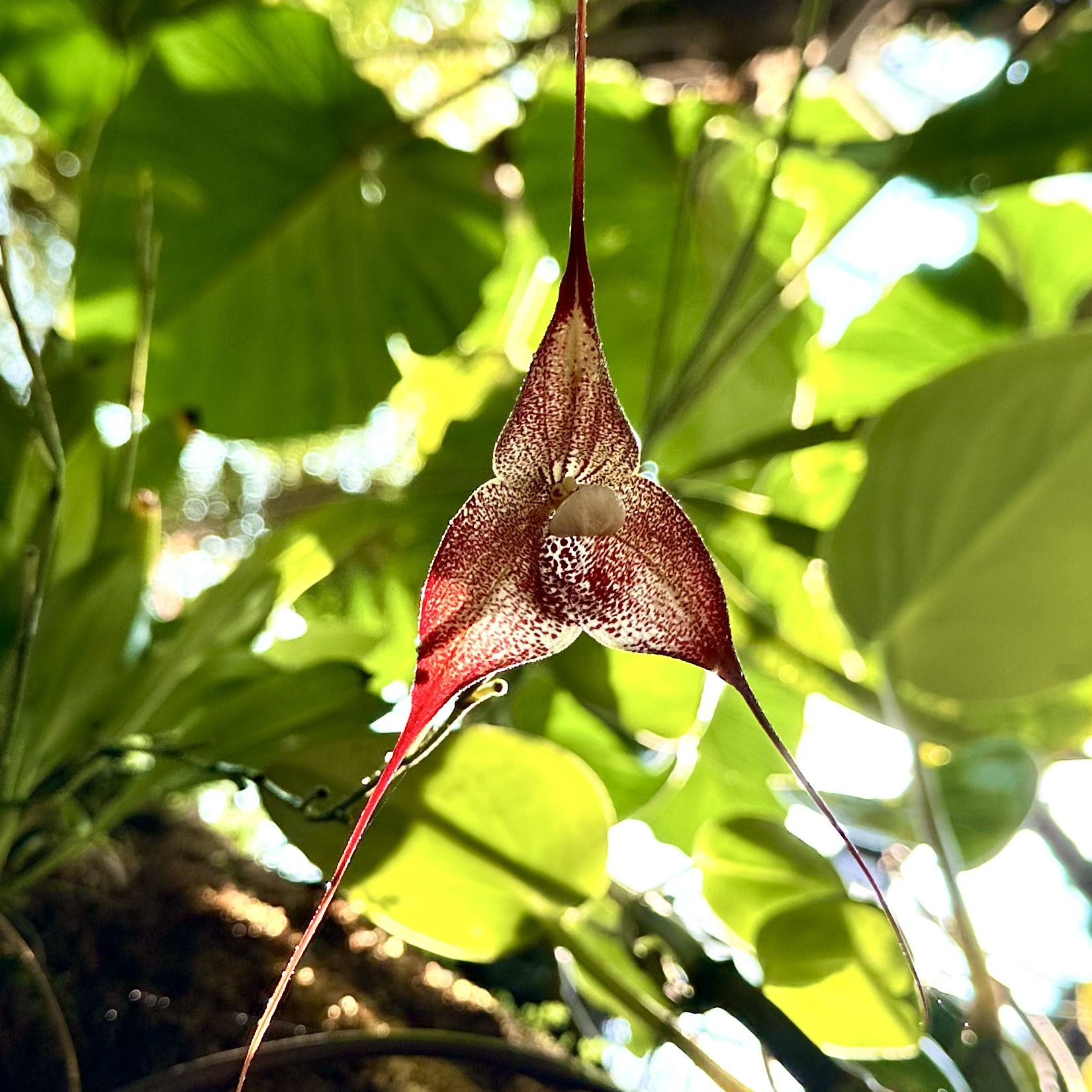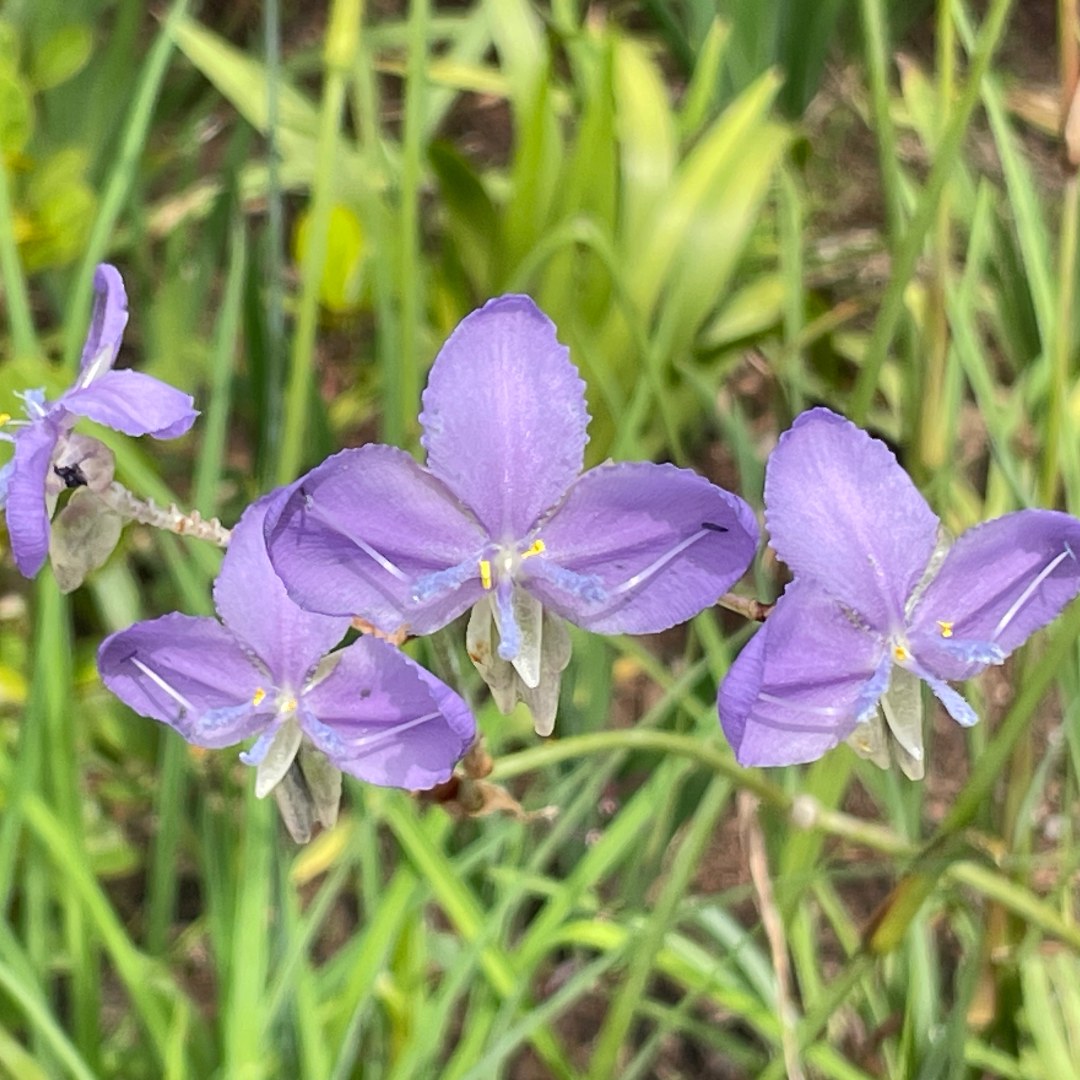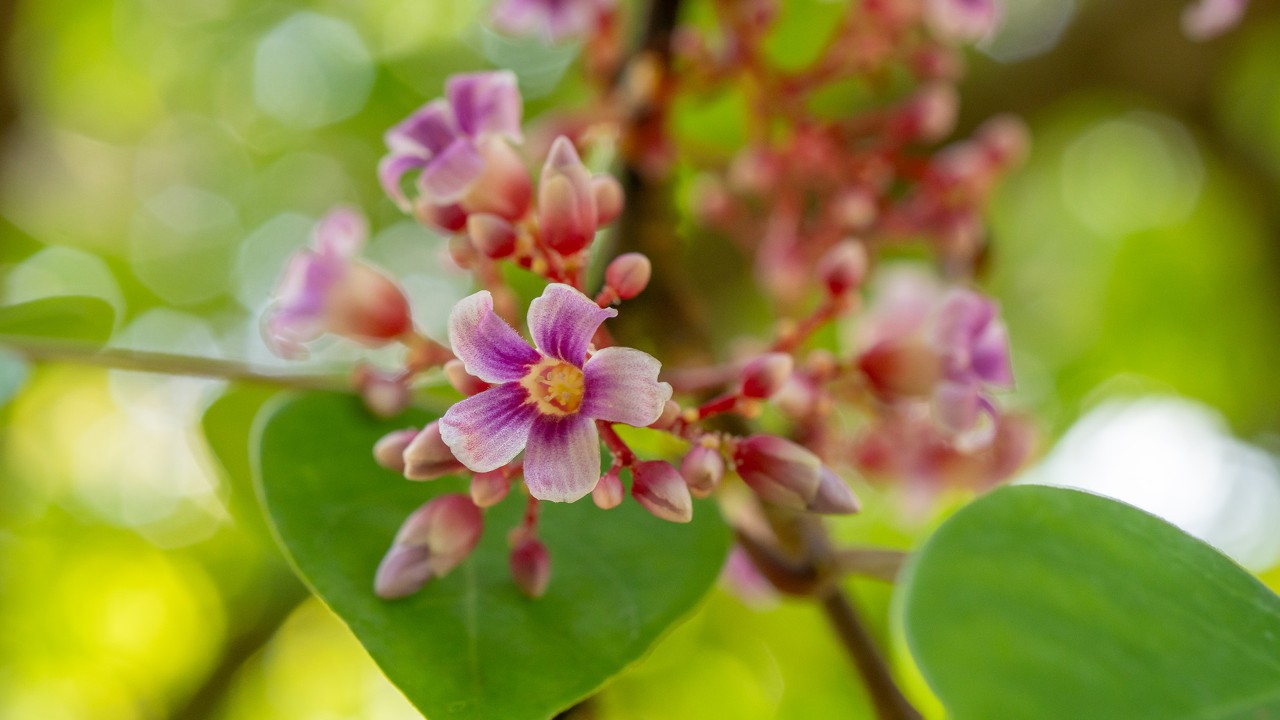 Close up of the Averrhoa carambola flower
Close up of the Averrhoa carambola flower
The star fruit (Averrhoa carambola) is a small tree that grows up to 5 meters tall and produces small pinkish-purple flowers that are borne on panicles measuring 5 to 10 centimeters in length. Each individual flower is around a centimeter wide and produces a sweet nectar that attracts insects such as honeybees and stingless bees for pollination. Other than humans, fruits are often consumed by birds, such as the long tailed parakeets. As its name suggests, the fruit of the star fruit is star-shaped when cut across its width.
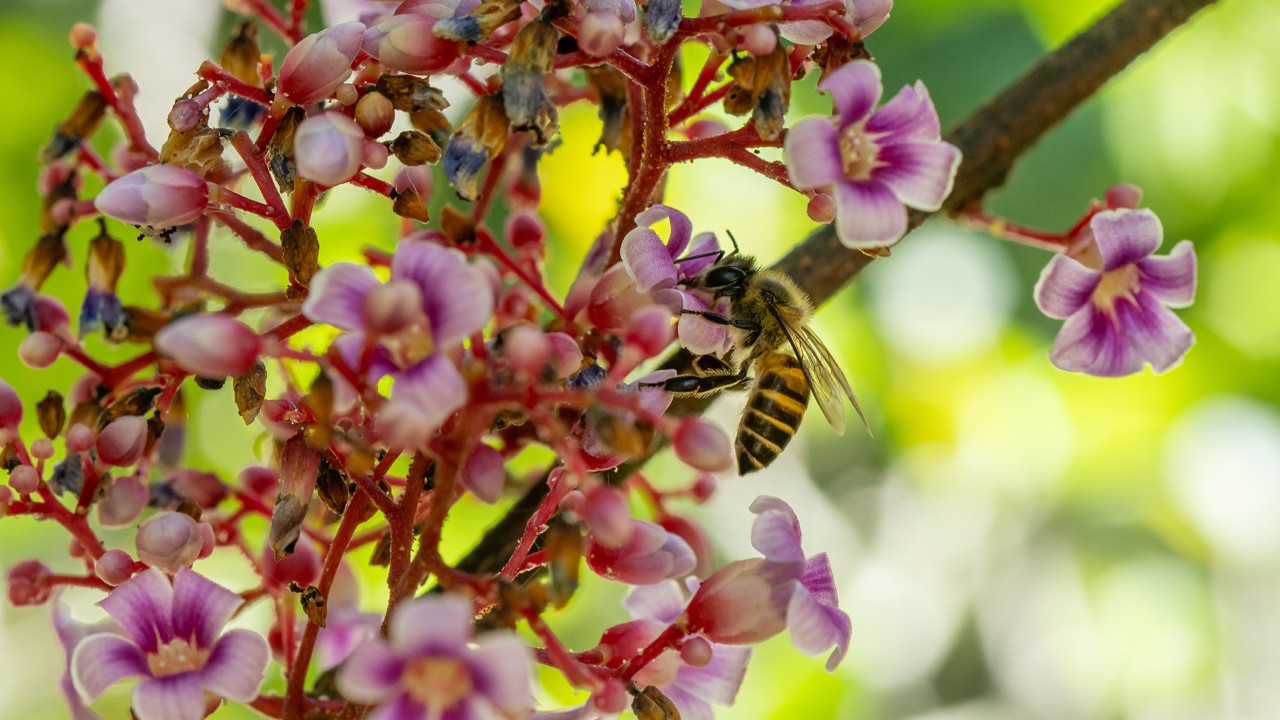 A honey bee (Apis sp.) feeding on the nectar of the star fruit flowers.
A honey bee (Apis sp.) feeding on the nectar of the star fruit flowers.
Native to Indonesia, Malaysia and Sri Lanka, star fruit is cultivated throughout many tropical regions around the world. These yellow, fleshy fruits are a rich source of antioxidants, including vitamin C, β-carotene, and gallic acid, and minerals such as magnesium, iron, zinc, manganese, potassium, and phosphorous. If you have ever tasted a star fruit, you’ll know their taste ranges from sweet to sour, depending on the stage of ripeness and the cultivar. Studies have shown that the fruits are sweetest when allowed to ripen on the tree before harvesting. However, to cater to mass production and shipping, fruits for international sale are picked while still green with just a hint of yellow, so they are firm enough to survive transport and storage.
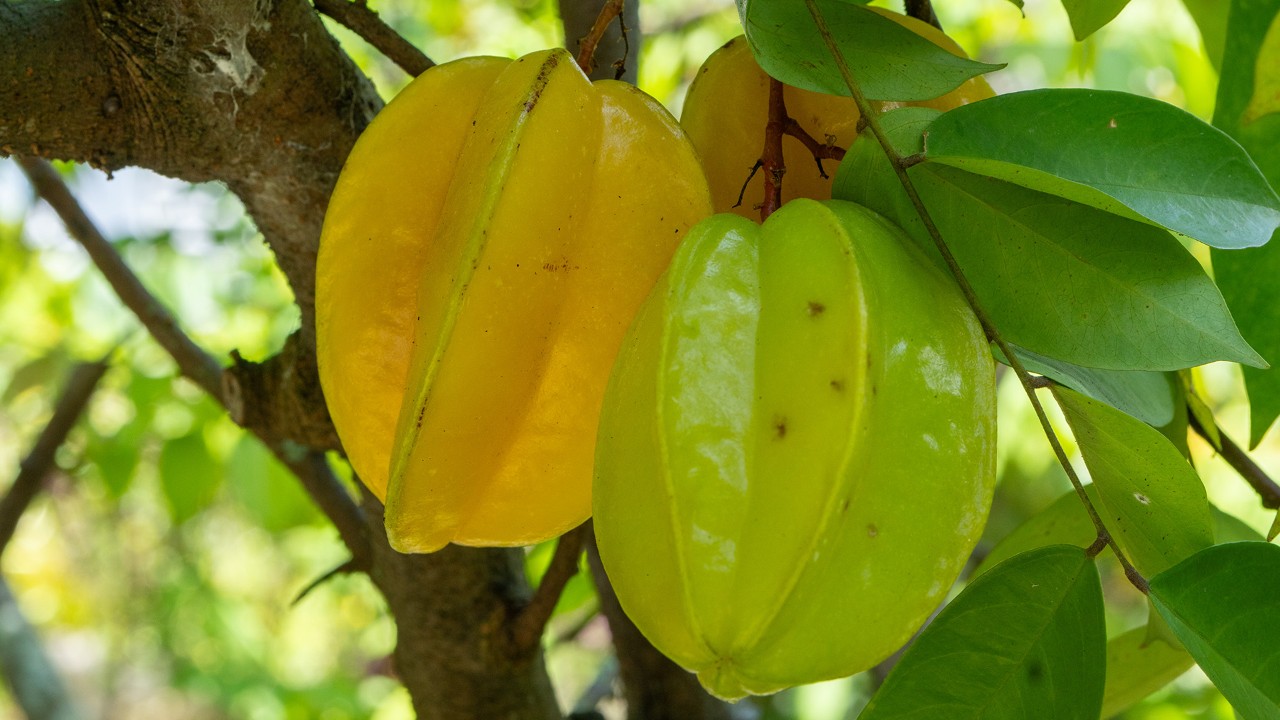 Ripe yellow star fruit on the left and an unripe green star fruit on the right
Ripe yellow star fruit on the left and an unripe green star fruit on the right
Averrhoa carambola belongs to the small wood sorrel family (Oxalidaceae) that consists of just five genera. Yes, the starfruit belongs to the same family as a common houseplant – purple shamrock (Oxalis triangularis)! You can see evidence of their close relationship by their similar looking flowers. Another species of Averrhoa that is also cultivated for its sour fruits is belimbing (Averrhoa bilimbi).
You may find these short starfruit Averrhoa carambola trees alongside its close relative, the belimbing, at Malay Garden and Active Garden.
Written by: Sharifah Osman, Senior Manager (Research and Horticulture)
As an avid flora photographer, Sharifah is consistently curious about the natural world that surrounds her. So much so that she eventually pursued a career in horticulture while dabbling in botanical art and photography during her free time.
/1920x1080px-peruvian-wild-petunia-01.jpg)
